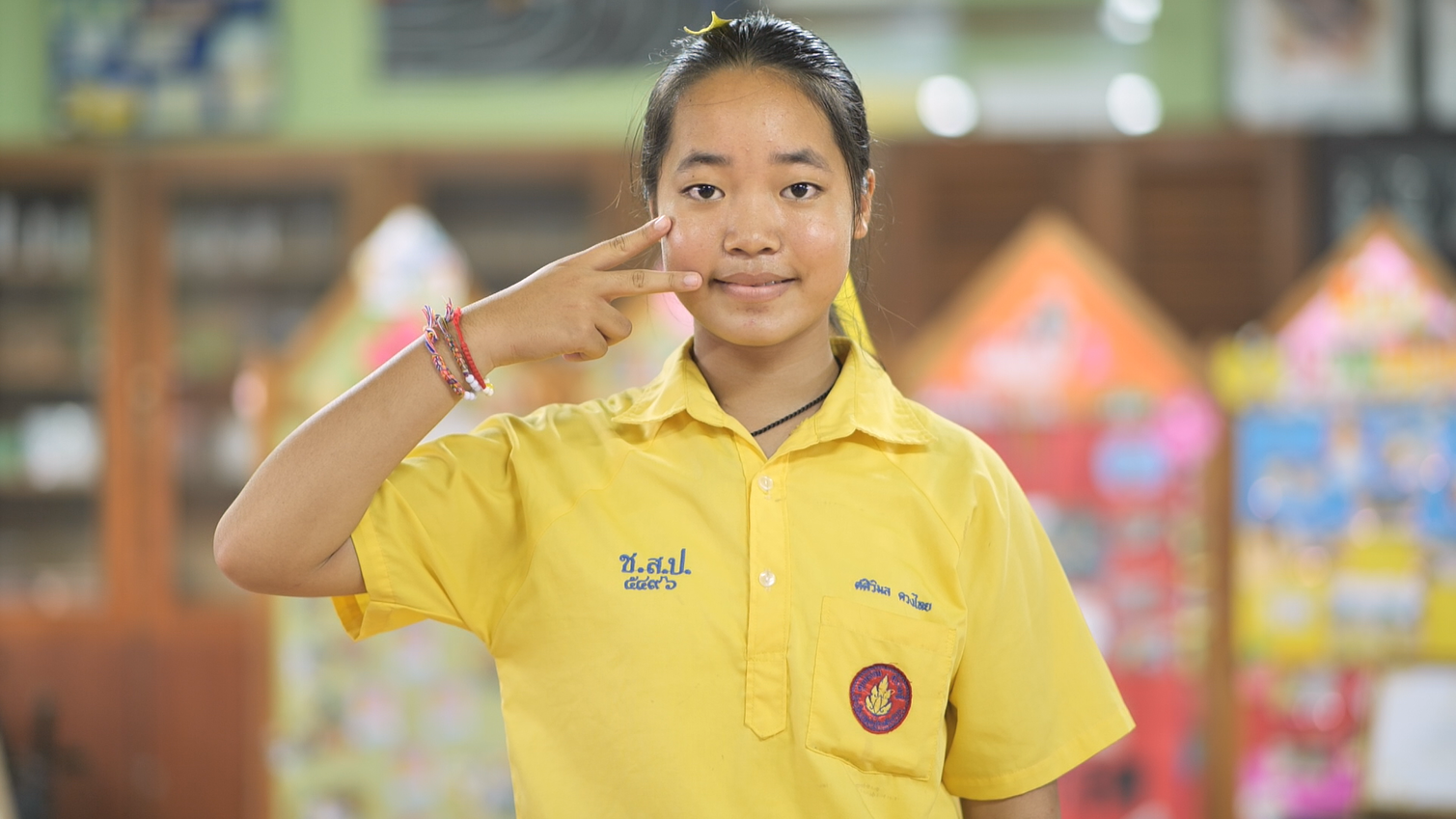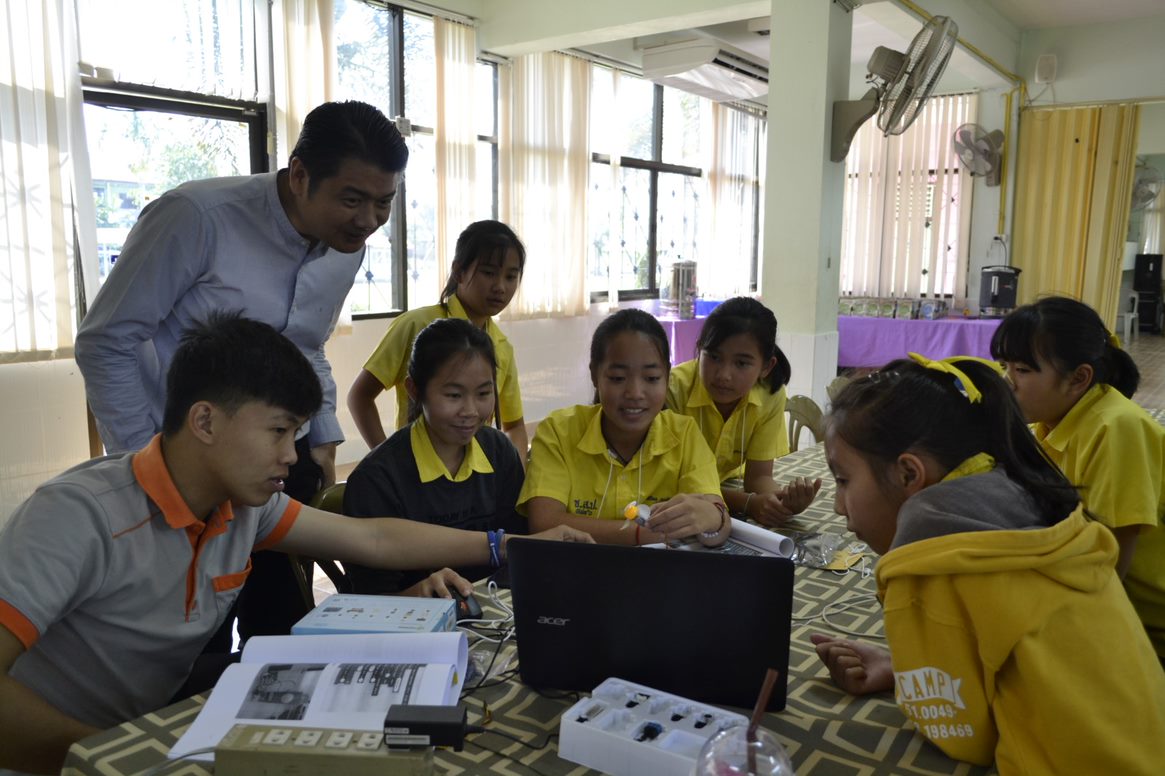Girls' Next Gen: An innovative learning to instil girls' leadership in disaster and climate resilience

Image: Plan International Thailand
Βy Thanapol Kheolamai
Chiang Rai is one of the northern provinces of Thailand bordering Myanmar and Lao PDR. Located in the earthquake zone, it is also prone to climatic hazards: landslide, flashflood, forest fire, drought, storm, extreme temperature and particulate matter (PM) 2.5. In the last six years, it has experienced 1,211 earthquakes. Of these, 113 were reported by people that shakings were clearly visible. The hardest took place in May 2014 when the 6.3 magnitude earthquake damaged over 9,000 households, 35 school buildings, and many other public facilities and rendered 23 injured and two dead.
Chumchon Baan Sanchampa (CBS) School in May Suay, Chiang Rai was hard hit by the earthquake. This middle-sized public school was founded in 1921 and is currently administered by the Office of Basic Education Commission (OBEC). It hosts over 500 students from pre-school level to the ninth grade. The principal, Mr. Churchart Saokhumket reflected: “In 2014, May Suay was heavily affected. Everyone was surprised and panicked. It had never occurred at this scale. The shake was strong and it lasted for quite a while”. Realizing the imminent danger, the principal shared that the earthquake triggered a change in the way CBS trains their teachers and conducts the learning with students in the later years. “Why don’t we teach our children how to deal with that situation to be able to protect themselves? We needed to do something, so our school began teaching about earthquake and disasters”.
In 2018, the school started to be actively involved in Safe Schools Project with Plan International Thailand. It is among the pioneers in promoting innovative learning in disaster risk reduction (DRR), the so-called Science, Technology, Engineering, and Mathematics - Disaster Risk Reduction (STEM-DRR) Curriculum and it has become a training hub for local STEM teachers in Education Service Area Office 2 (ESAO-2) in Chiang Rai.
CBS Pathway to Disaster Risk Reduction and Safe School
With various partnerships, including one with Plan International, it took years of journey for the school to develop an earthquake curriculum from scratch which has become a school-wide STEM-DRR curriculum. Nowadays, it is mandatory for every student, of pre-school to Grade 9, to learn about DRR on a weekly basis. “Each week on Thursday for 2-3 hours, every student will learn in their class about disasters. Activities would vary depending on the class and relate with STEM. For example, when learning about the earthquake, students will not only learn about science and geography but also other topics like health…they are interconnected.” Mr. Chuchart explained.
He found introducing digital technology to children adds value to their DRR learning. He went on, “…especially with coding, which is new to many students, they learn and later apply it into their projects. It’ll spin off new ideas. It makes students enjoy (the process) anδ teachers too!”. Teachers and students had their moments to explore the interconnectedness among different issues and potentials surrounding a disaster event.
All teachers are trained as learning facilitators to promote the culture of safety. They work as a team to ensure disaster education is carried out in an effective and practical manner. Disaster education has also been integrated into the STEM lessons, from early years. A female Science teacher shared an example of how DRR is taught to Grade 1-3 students. “I link STEM with learning about disasters. The project-based approach helps students identify problems and learn to solve them systematically”.
Mr. Thaweewat Peeraban, a Social Study teacher and a safe school advocate told that he has observed a change in recent years. “Students now have better skills in disaster preparedness. They are not as nervous as before during mock drills”.

Image: Plan International Thailand
Realising new possibilities for girls to lead DRR innovation
Giving opportunities for girls to cultivate their interest and leadership in Safe Schools paves the way to promote gender equality and eliminate any barriers. This raises girls’ voices and instils their leading roles in the activity.
“I like to participate in the earthquake drills”, Poppy, a 9th Grade girl student at CBS, shared her opinion on a Safe Schools’ activity that she has participated. “Normally for earthquake, we don’t know when it will happen and before I also didn’t know how to deal with it. But when I participated in the drills together with our teachers, I learnt how to respond and be safe if earthquake happens”. She had her impression when working with friends to conduct multi-risk assessment last year. “I like the way we can invent things. For example, (this is) our 3D hazard map for the school. Compare it to the normal map on paper, I can learn and see it more detailed, more clearly”.
View, a girl student of 8th grade, said her dream with conviction, “I want to be an engineer”. Having attended Micro:Bit workshop and participated in safe school activities for two years, she wanted to invent something: “My aspiration is to invent something new and innovative. I want to somehow solve problems we are facing…like in our school”. As she looked towards the corner of her classroom, “that is basic PM 2.5 filtration system that I made with my friends. The other one is an automated plant watering system using Micro:Bit to grow vegetables. It needs light and soil humidity detectors to be installed”, as she proficiently explained all the technical terms. “Code is needed to make it function!”.
The lessons are tailored to different grades. With senior students, digital tools and innovation are utilized once they are ready to deal with more complex IT equipment. “Six step process is applied to introduce innovation learning to students”, an IT teacher elaborated. “It starts from identifying and analyzing problems, designing and prototyping a concept work, then creating and presenting the project. Most works are built upon students’ ideas. Teachers support them to think, analyse, and create their innovation”.
As students in all classes are mixed of boys and girls, when asked about the key challenge in teaching innovation to girl students, the same teacher made his point, “I don’t see girls are different from boys (in terms of learning and interest in IT). Many times, I find girls are more focused on details than boys”. Such a statement sounds contradictory to the gender stereotype resonating with general public opinion that as a hard science, STEM is a ‘boy thing’ and girls are more inclined to arts. Countering to this belief, Ms. Kessaya Klanarong, a female Science teacher, shared her blunt opinion, “I see no difference in girls’ and boys’ performance (on STEM). When girls have equal opportunity to learn about this, they can create innovation works comparable to boys. Girls can think systematically, be detail-oriented and creative”.
The experience from CBS brings a combination of project-based learning approach, STEM education and basic programming in learning school safety. This offers a new way on how DRR is taught in schools by teachers, thereby equally improving DRR capacities and digital literacy for girls and boys.